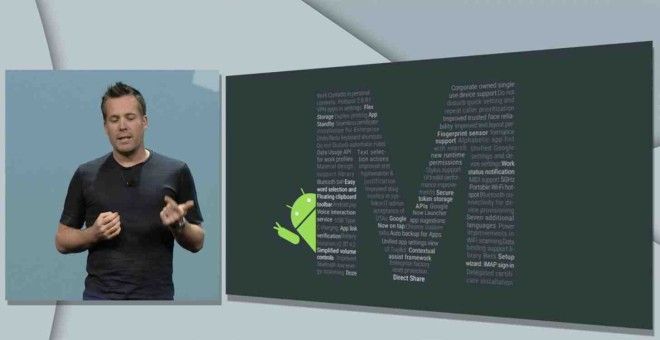Android M announced by Google, coming later this year with several improvements
At its I/O developer conference in San Francisco just a short while ago, Google announced details about its updates and improvements for 2015. They included new features for virtually all of its major products and services, but the one of most significance for us phone addicts was Android M. Unlike last year, this software update seems to be much more about adding features to improve the performance and usability and not a major UI change. Google highlighted six key improvements within Android M, which should be launching in Q3.
Right off the bat, Google wanted to let us know that it has greatly improved the customizability of its App Permissions. In M, instead of approving everything at the time of purchase/download, each app will ask you for access to specific parts of your phone as you try to access it. Very much like iOS, if an app needs access to your calendar, contacts or camera (for example) you’ll get a simple popup menu asking you to grant that app access. For instance, if you want to take a picture to send to your friend on Messenger, the app will ask for access to your camera at the time. What’s more, there’s a settings option to view apps and their permissions so you can toggle individual access points on or off at any time.
This one is something quite unique to Android and sounds promising. Essentially, app makers will be able to make use of Chrome browser within their apps and create bespoke web pages. So instead of building their own browser within the app, they can just use Chrome’s new Custom Tabs feature to make it feel like you’re still within that app. What’s more, you benefit from Chrome’s other features like auto-filling passwords and saved passwords, for instance.
If you have an Android phone, you’ll be accustomed to the irritating popup “which app would you like to use”. You’ll see it the first time you hit a web link, or link to a Twitter status, YouTube video or Play Store item. Any internet links will offer the chance to set any app with a built-in browser as the default for opening those kind of links. Twitter links – for example – will offer you the browser or your Twitter app(s). With Android M, it’ll be able to self-verify links. If it’s a Twitter link, it’ll automatically open in the Twitter app. If it’s a YouTube video, it’ll open in the YouTube app. No more having to tell it which apps to use, it’ll figure it out itself.
The easiest way to describe Android Pay is that it’s essentially the same as Apple Pay, but for Android devices with NFC. You can pay at any terminal with NFC contactless technology installed or with the official Android Pay label/branding. It works pretty much the same as Apple Pay too in that you just have to unlock your phone and tap it on the receiver. You don’t have to open an app or perform any other actions for it to pay for your transaction. What’s more, it’s secure and doesn’t pass any of your personal information on to the vendor. It’ll run on any device with NFC running Android KitKat or later.
While some manufacturers, like Samsung, have their own Fingerprint sensors, software and services on the market, Google wants to introduce a standard for Android phones. Any manufacturer can build a fingerprint sensor in to its products and make use of Google’s Fingerprint Support feature in Android M. It will let you unlock the device, or authorize Android Pay payments.
Two cool features are coming with Android M that combine smart hardware and software. The first is “Doze”. This essentially uses your accelerometer/motion sensors to detect when your device is lying flat and not being used. In those times, the device will dramatically reduce its background processes and increase the standby time. Giving the Nexus 9 as an example, they announced that it achieved double the standby time.
Secondly was support for USB Type-C. Like the new MacBook, new Android phones from later this year will be able to have Type C built in. This will enable an awesome set of features including the ability to charge batteries even faster than they currently do. The connector is reversible, so there’s no fiddling around trying to get the USB connector in the right way. What’s more, your phone will be able to output data as well as power. So, you can choose whether you want to have your phone charging, or have your phone charging another device.
There was a whole bunch of other features hinted, but, only a couple were mentioned. Android M brings back better audio controls, so you’ll be able to simply change specific volumes of media, ringtones and alarms. There’s easy word selection built in and a feature called Direct Share which basically works like AirDrop on iOS/Mac.
Although it’s not exactly an exciting and dramatic announcement, I’ll be pleased for all the Android M improvements on my devices. What do you make of all the announcements? Anti-climactic or just what the doctor ordered?

